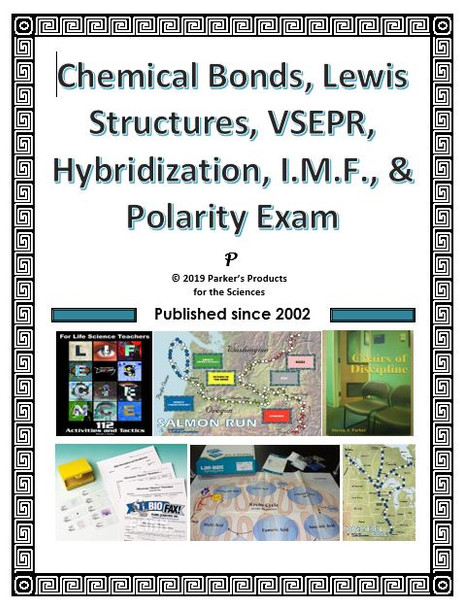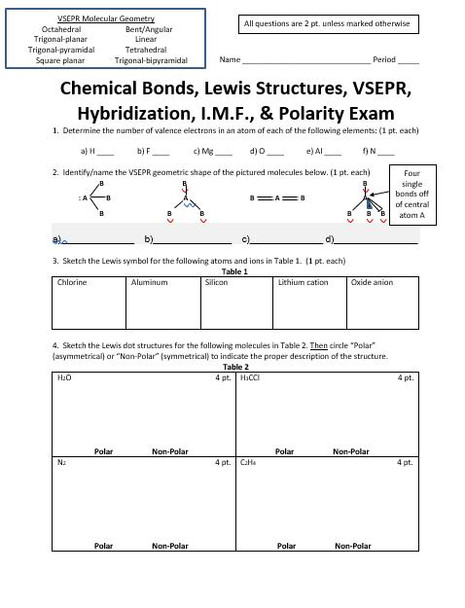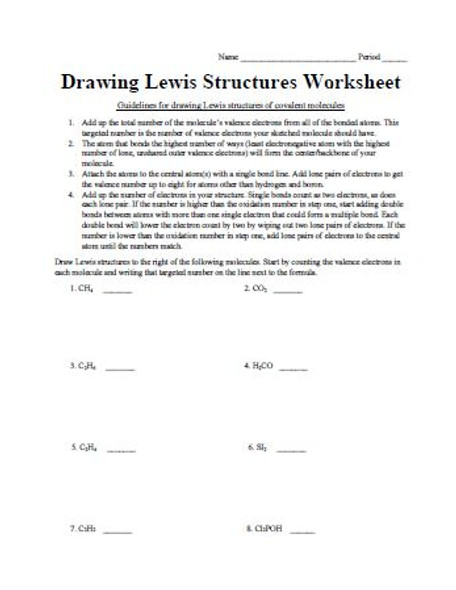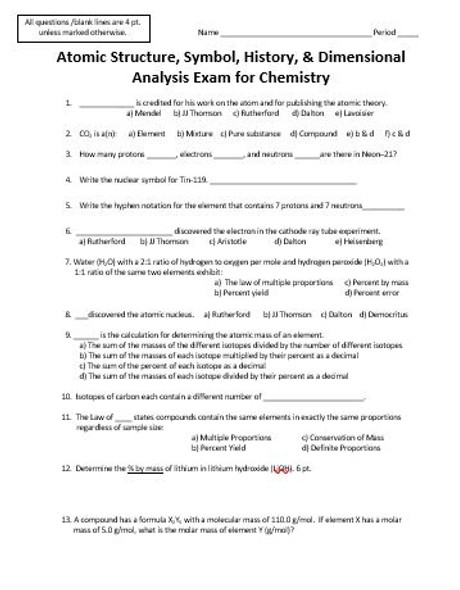Chemistry Exam about Bonds, VSEPR, Hybridization, Polarity, Lewis Structures, IMF
- Bulk Pricing:
- Buy in bulk and save
- Contributer:
- Parker's Products for the Sciences
- Lesson Category:
- Assessment
- Grades:
- 10-12
- Answer Key:
- Yes
- Pages:
- 9
- Product File:
Description
This listing features a four-page exam for high school chemistry about chemical bonds (Covalent, ionic, and metallic), Lewis symbols & structures, VSEPR (Valence Shell Electron Pair Repulsion) Theory / geometric shapes of central atoms, hybridization notation, I.M.F. (Intermolecular Forces), and the polarity/non-polarity status of molecules.
In this exam, students will:
· Determine the number of valence electrons in the presented atoms
· Identify/name the VSEPR geometric shape of the central atom in pictured molecules
· Sketch the Lewis symbols of parent atoms, a cation, and an anion
· Sketch the Lewis structures of four molecules and state whether each one is polar or non-polar
· Sketch all of the resonance (Lewis) structures for nitrate and properly label the individual charge of the applicable atoms as well as the overall charge of the
polyatomic ion
· Map out the ionization process that results in a balanced ionic compound, neutral in overall charge
· Complete a fill-in-the-blank section about the exothermic process of bond formation to form a crystal lattice structure (Word bank provided)
· Answer miscellaneous questions about the purpose of VSEPR, the type of species that form covalent bonds, the types of species that form ionic bonds, and the reason(s) why atoms form bonds
· Determine the electronegativity difference between pairings of atoms, predict the probable bond type (Non-polar covalent, polar covalent, or ionic), identify the more electronegative atom, and then rank the pairs of atoms from least covalent in character to most covalent in character
· Name three unique properties of metals
· Explain the chemistry of a metallic bond
· Rank the three main bonds in chemistry in order of increasing strength
· Predict which molecule in a pairing is more polar
· Write the hybridization notation of the central atom in a given molecule
· Predict the I.M.F. for a presented molecule/pairing of molecules
I provided a thorough four-page key with the answers in red font.
This PDF document will become editable upon conversion to Microsoft Word with an Adobe Acrobat Reader app. Once converted, you can edit the point valuation and the title and use this resource as a study guide instead.
Check out my store for dozens of other quality field-tested, innovative, practical, and user-friendly products for several fields of science - biology, chemistry, field ecology, physical science, earth science, space science and human anatomy and physiology.
Check out my store, Parker's Product for the Sciences, for other engaging science activities.



















